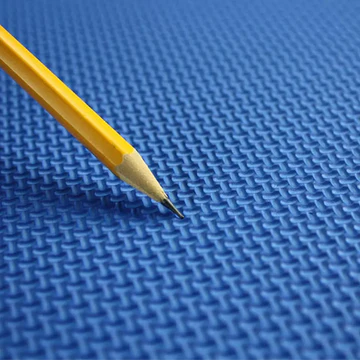When most people think about boosting their workouts, they picture heavier weights, faster sprints, or advanced routines. But there’s a hidden performance enhancer under your feet — gym flooring. The right flooring doesn’t just protect your space; it directly impacts your comfort, safety, and workout efficiency. Whether you train at home or in a professional gym, understanding the secrets behind the best gym flooring can take your sessions to the next level.
Why Gym Flooring Matters More Than You Think
Gym flooring is more than a surface to stand on. It’s the foundation that supports your training style, absorbs impact, prevents injuries, and prolongs your equipment’s lifespan. Choosing the wrong type can lead to discomfort, noise problems, and even damaged floors. But with the right flooring from a trusted provider like Rubberfitfloors, you can:
-
Reduce joint strain during high-impact exercises
-
Minimise injury risks from slips and falls
-
Protect your existing floors from heavy equipment
-
Improve grip and stability for better performance
-
Create a quieter, more focused training environment
Secret #1: Shock Absorption Saves Your Joints
If you’ve ever finished a workout with sore knees or an aching lower back, your flooring might be to blame. High-quality Gym Flooring offers superior shock absorption, meaning it cushions each step, jump, and lift.
This is especially crucial for HIIT training, plyometrics, and CrossFit workouts, where explosive movements are common. Without proper cushioning, the repeated impact travels up through your joints, leading to long-term strain.
Pro tip: Choose flooring with at least 8–12mm thickness for intense workouts. Thicker mats provide better energy return and reduce fatigue.
Secret #2: Grip and Stability Can Make or Break Your Lifts
Ever felt your foot slip mid-squat? That moment of instability can ruin your form — or worse, cause injury. The best gym flooring features textured surfaces designed for maximum traction, even during sweaty sessions.
For weight training and powerlifting, non-slip flooring is essential. Rubber flooring not only grips the floor beneath but also offers a stable base for lifting heavy loads. This stability ensures your movements remain controlled and safe.
Secret #3: Noise Reduction Is a Performance Booster
If you’ve ever worked out in an upstairs gym, you know how loud dropped weights can be. Quality gym flooring acts as a sound barrier, reducing the thud of weights and the vibration that travels through the building.
This isn’t just about being a good neighbour — a quieter training environment helps you stay focused. Plus, noise reduction is a must for home gyms in shared spaces.
Secret #4: Flooring Extends Equipment Life
Barbells, kettlebells, and treadmills aren’t cheap. Dropping weights directly on hard surfaces can damage both your floors and your equipment. Rubber gym flooring absorbs the shock, protecting plates from cracking and machines from shaking loose over time.
Think of your flooring as an insurance policy for your fitness investment — it pays off in the long run.
Secret #5: Modular Flooring Lets You Adapt Your Space
One of the most overlooked secrets is versatility. Interlocking gym tiles let you customise your workout area, expand as needed, or replace single tiles if damaged.
If your training style changes — say you go from yoga to heavy lifting — you can easily swap sections for different flooring types without redoing the entire space.
Types of Gym Flooring and Their Benefits
1. Rubber Gym Tiles
Durable, shock-absorbent, and perfect for high-impact workouts. Interlocking designs make them easy to install without adhesives.
2. Rubber Rolls
Ideal for covering large areas with minimal seams. Excellent for commercial gyms and high-traffic zones.
3. Foam Mats
Lightweight and comfortable, great for stretching, Pilates, and yoga. However, they’re less durable for heavy weight training.
4. Vinyl Sports Flooring
Stylish and easy to clean, suitable for multipurpose fitness spaces.
Choosing the Right Gym Flooring for Your Workout Style
Before you buy, consider:
-
Workout Type: Heavy lifting? Go thicker and denser. Yoga or bodyweight workouts? Softer foam or vinyl may work.
-
Location: Upstairs gyms need noise-reducing flooring. Garages require moisture-resistant options.
-
Budget: While quality flooring costs more upfront, it saves money in equipment and injury prevention.
-
Ease of Installation: Interlocking tiles are DIY-friendly. Rolls may require professional fitting for a seamless look.
Installation Secrets for Long-Lasting Gym Flooring
-
Clean the subfloor thoroughly before installation to ensure tiles or rolls lay flat.
-
Leave a slight gap around the edges to allow for material expansion.
-
Anchor heavy equipment to prevent shifting and excessive wear in certain areas.
Maintenance Tips to Keep Your Flooring Performing Like New
-
Regular sweeping/vacuuming to remove grit that can wear surfaces.
-
Mild soap and water cleaning for rubber surfaces — avoid harsh chemicals.
-
Immediate spill cleanup to prevent stains and odours.
-
Rotate movable mats to ensure even wear over time.
Final Thoughts
Investing in the right gym flooring is one of the smartest moves you can make for your fitness journey. It’s not just about aesthetics — it’s about performance, safety, and longevity. By choosing flooring that supports your workout style, protects your body, and enhances your environment, you’re setting yourself up for success in every session.
For top-quality options in the UK, Rubberfitfloors offers durable, impact-resistant flooring designed to handle high-intensity training while keeping your joints and equipment safe.
FAQs
1. What thickness is best for gym flooring?
For heavy lifting and high-impact workouts, 8–12mm thickness is ideal for maximum shock absorption.
2. Can gym flooring reduce noise in an upstairs gym?
Yes — high-quality rubber flooring significantly reduces impact noise and vibration.
3. Is foam or rubber better for home gyms?
Foam is softer and lighter, ideal for yoga or stretching, while rubber is better for heavy lifting and durability.
4. How do I clean rubber gym flooring?
Use mild soap and water, avoiding harsh chemicals that can break down the material.
5. Can I install gym flooring myself?
Yes — interlocking tiles are easy to install without adhesives, making them perfect for DIY setups.



